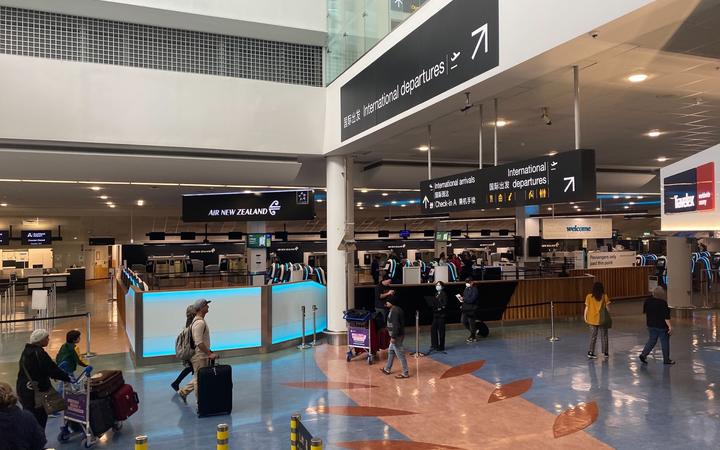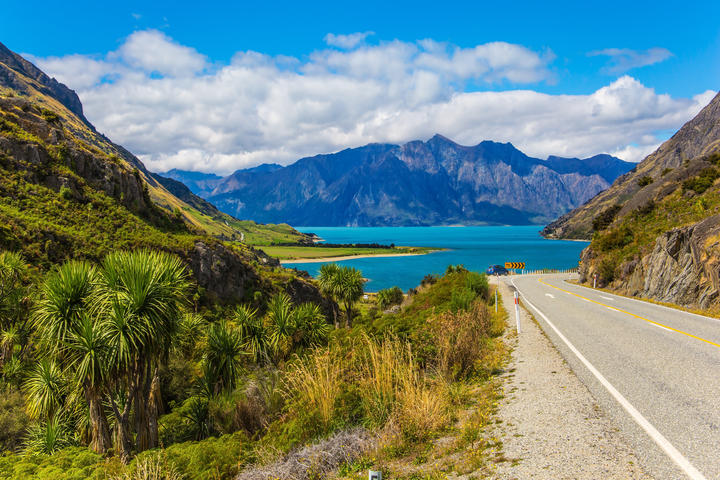The head of Tourism New Zealand says 2022 looks like the year of reopening, but he acknowledges it will be a bumpy road ahead.
 New Zealand’s borders have been mostly closed to overseas travellers for nearly two years. Photo: RNZ / Katie Todd
New Zealand’s borders have been mostly closed to overseas travellers for nearly two years. Photo: RNZ / Katie Todd
The borders have been closed for nearly two years with only a few attempts at a trans-Tasman bubble.
In response – and at the request of the then tourism minister – the organisation began honing in on the domestic market, including launching the campaign ‘Do Something New, New Zealand’.
Its chief executive René de Monchy said Tourism New Zealand would continue to play a role in domestic marketing and supporting the industry and regions, but its primary focus would be back on international markets.
“The group of people that are most likely to travel outside of the peak season and are most likely to travel furthest afield in New Zealand are New Zealanders so we’ll be certainly focused on that as well, continuing to entice ourselves to travel around this beautiful country,” de Monchy said.
When it came to enticing overseas travellers back, he said removing self-isolation requirements would be key.
“As we think about off-shore customers and off-shore trade partners, absolutely that’s the news they’re looking for is when those isolation requirements will come down so that people start to have the confidence to make the bookings for a trip to New Zealand.”
The announcement of the phased border reopening meant the long haul travellers would have time to start preparing and be able to confidently book their summer trips, he said.
De Monchy did not anticipate that the lack of certain border reopening dates would impact future bookings from visitors, despite the uncertainty causing concern in the tourism industry.
In recent weeks, several tourism operators have described the state of their industry as decimated.
He acknowledged the hit the industry had taken and that scaling back up would be a challenge, but said it was a positive challenge.
“I think the industry will be very focused on reopening, coming out of being dormant, reopening their doors, rehiring and hiring new staff.
“Bear in mind for some of these operators, they’re going to have to start hiring people and spending more money before they actually start getting money through their tills so it’s going to be quite challenging for them to get restarted.”
Last year, Tourism Minister Stuart Nash unveiled his vision for the future of the industry, including attracting more high-value tourists and a greater focus on sustainability.
 Tourism New Zealand’s primary focus this year will be back on international markets. Photo: 123RF
Tourism New Zealand’s primary focus this year will be back on international markets. Photo: 123RF
It was a vision that de Monchy said was playing a strong role in how Tourism New Zealand moved forward and its marketing.
“We talk about high-quality visitors, so part of that is going [to be] how much money do they have to spend when they come here on a holiday.
“But on that is also, what time of year do they like to travel, do they want to go off the beaten path, and it’s really about having a portfolio of different markets and audiences that you can promote within that.”
For Tourism New Zealand, part of their plans was a ramp up in travel trade with the organisation training up to 80,000 travel agents to ensure they were ready to sell Aotearoa, he said.
Pre-Covid, close to three quarters of arrivals in New Zealand from long haul markets would book that travel through an intermediary.
